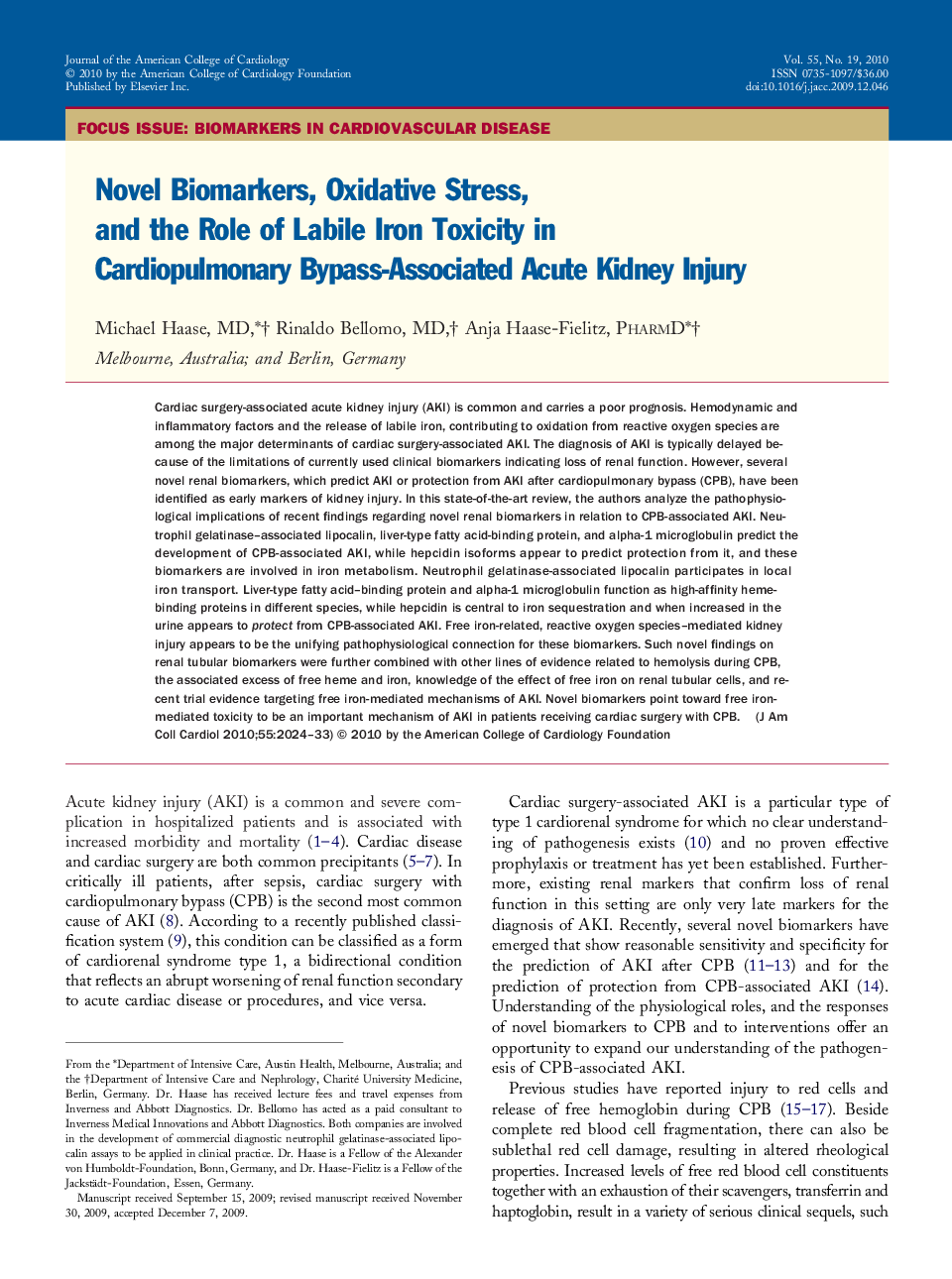| Article ID | Journal | Published Year | Pages | File Type |
|---|---|---|---|---|
| 2948685 | Journal of the American College of Cardiology | 2010 | 10 Pages |
Cardiac surgery-associated acute kidney injury (AKI) is common and carries a poor prognosis. Hemodynamic and inflammatory factors and the release of labile iron, contributing to oxidation from reactive oxygen species are among the major determinants of cardiac surgery-associated AKI. The diagnosis of AKI is typically delayed because of the limitations of currently used clinical biomarkers indicating loss of renal function. However, several novel renal biomarkers, which predict AKI or protection from AKI after cardiopulmonary bypass (CPB), have been identified as early markers of kidney injury. In this state-of-the-art review, the authors analyze the pathophysiological implications of recent findings regarding novel renal biomarkers in relation to CPB-associated AKI. Neutrophil gelatinase–associated lipocalin, liver-type fatty acid-binding protein, and alpha-1 microglobulin predict the development of CPB-associated AKI, while hepcidin isoforms appear to predict protection from it, and these biomarkers are involved in iron metabolism. Neutrophil gelatinase-associated lipocalin participates in local iron transport. Liver-type fatty acid–binding protein and alpha-1 microglobulin function as high-affinity heme-binding proteins in different species, while hepcidin is central to iron sequestration and when increased in the urine appears to protectfrom CPB-associated AKI. Free iron-related, reactive oxygen species–mediated kidney injury appears to be the unifying pathophysiological connection for these biomarkers. Such novel findings on renal tubular biomarkers were further combined with other lines of evidence related to hemolysis during CPB, the associated excess of free heme and iron, knowledge of the effect of free iron on renal tubular cells, and recent trial evidence targeting free iron-mediated mechanisms of AKI. Novel biomarkers point toward free iron-mediated toxicity to be an important mechanism of AKI in patients receiving cardiac surgery with CPB.
